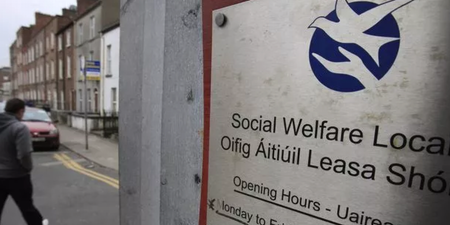Dr Rachel Mackey is a women’s health specialist at Women’s Health Clinic and author of The Women’s Health Book: A Guide for the Irish Woman. She offers her expertise on a wide range of health issues, using extensive obstetric and gynaecological expertise.
Here is her invaluable advice…
Miscarriage is a heart-breaking outcome to what is usually an incredibly happy event in a woman’s life. Unfortunately it’s also very common, affecting one in five pregnant women under the age of 40, and as many as half of pregnancies in women over 40.
Most first trimester miscarriages occur because of a chromosomal abnormality. This occurs in a random fashion and women are usually reassured that it is unlikely to happen again. Women who have had a first trimester miscarriage do not require any investigations, but if you experience three consecutive miscarriages, it’s possible that there may be another cause, and more investigations are needed.
Symptoms of a miscarriage
The main symptoms are crampy pain and vaginal bleeding. The bleeding varies from brown spotting to bleeding similar to that during a period. Likewise, the pain can range from extremely mild to severe. Women also often report a loss of pregnancy symptoms.
Types of miscarriage:
- Threatened miscarriage – this describes mild bleeding and pain, but the pregnancy continues. More than 50 per cent of women with a threatened miscarriage go on to have a healthy full-term pregnancy.
- Inevitable miscarriage – this means that a miscarriage will definitely happen. The doctor who examines you will feel the neck of the womb has opened, and the pregnancy is over.
- Incomplete miscarriage – this is where some of the contents of the womb have come out, but some remain inside. A small surgical procedure is often done to fully empty the womb.
- Complete miscarriage – the entire contents of the womb have been passed naturally by the patient. This is the most common outcome of a miscarriage.
- Missed miscarriage/blighted ovum – this occurs when the fertilised egg attaches itself to the lining of the womb but fails to develop. The sac in which it lies continues to grow, and pregnancy hormones are produced initially, leading to a positive pregnancy test and pregnancy symptoms. In some cases you may experience spotting or cramps; in other cases the blighted ovum is only discovered at a routine first trimester ultrasound.
1) What to do if you experience bleeding
You should contact your doctor or your local maternity hospital if you are experiencing bleeding or pain during the first trimester. An ultrasound scan is usually arranged. If you have had a lot of heavy bleeding, the womb may be empty. In the case of a suspected blighted ovum, the pregnancy measurements will be much smaller than expected by the dates you have given. In that case, the ultrasound should be repeated seven days later to ensure there has been no growth in the meantime and that this is a blighted ovum. Sometimes you’ll miscarry in the meantime while waiting to repeat the scan. Depending on the results of the scan, your doctor will advise whether any further treatment is needed.
2) How do you treat a miscarriage?
If you have had a complete miscarriage, no treatment is necessary. If you have had an incomplete miscarriage or a blighter ovum, there are several options. One is an ERPC (evacuation of retained products of conception), a day case procedure that’s performed under full anaesthesia, where the womb is cleaned out. The other is to take medication at home called misoprostol, which causes the neck of the womb to open and expel the contents of the womb. In some cases, an ERPC is more appropriate – when the vaginal bleeding is very heavy, and the womb needs to empty quickly. For some women, a surgical procedure allows them to get quicker closure on a distressing situation. Options can be discussed with your hospital doctor. If you have taken misoprostol, be prepared – the bleeding that follows will be heavy and more painful than your usual period. You may pass pale coloured tissue as well as blood clots, which is foetal tissue.
3) What to expect after a miscarriage
Bleeding can persist for one to two weeks after a miscarriage, getting progressively lighter. Any pregnancy symptoms will disappear. You can usually expect your next period four to eight weeks after. If the bleeding is not settling you should try and see your doctor. It’s completely normal to feel emotionally drained and incredibly upset after you miscarry, regardless of how many weeks pregnant you were.
4) When can I try to get pregnant again?
Doctors have varying advice on this, but the truth is it depends on your individual circumstances. From a physical point of view, a lot of women will be fertile and ovulate two weeks after a miscarriage. There are no known risks to conceiving so quickly after a miscarriage, and it doesn’t increase your risk of miscarrying again. Previously it was thought that conceiving before your cycle was restored to normal made dating the pregnancy difficult, but with modern ultrasound that’s no longer a concern. The real question to ask yourself is, are we ready emotionally as a couple? Some are just not ready and need time to grieve for their loss and prepare themselves for conceiving again; others feel ready to try again a lot sooner afterwards.
Contact Women’s Health Clinic for a consultation with Dr Mackey.



















































